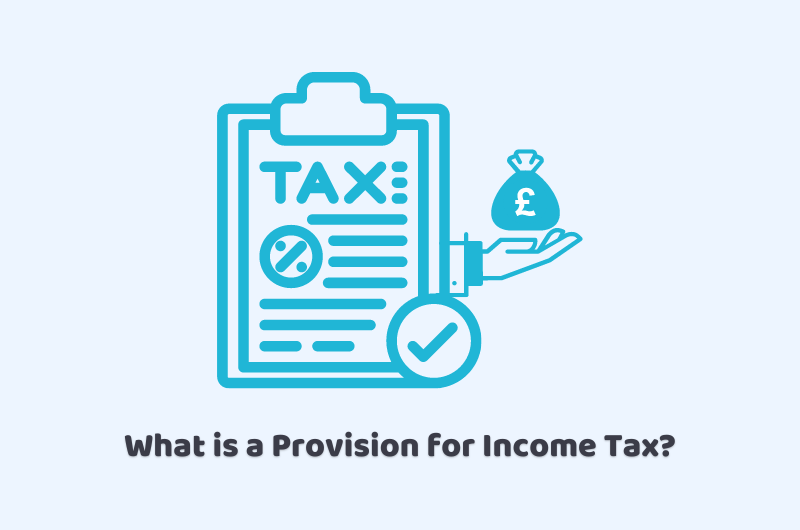
17/10/2022tax , Tax Issues , Tax Saving Tips
People often take corporate tax provisions as it works as a safeguard for your business and keeps you protected from the tax fines and penalties charged by HMRC in the case you have made a late tax payment. It is also referred to the tax burden that you might face in the current year, generally, this is set aside until the payments are paid. This is known to be a unique kind of provision as well.
This depends on the industry that your business is associated with that will decide what is the possibility of creating provisions related to bad debts, sale allowances, pensions, and depreciation. However, people still get confused and this article has got you covered to develop a better understanding of what is corporate tax provisions, what is the importance of tax provisions, and what is the way to calculate them.
Talk to our best accountants and bookkeepers in the UK at CruseBurke. You will get ensured instant help whether you are running a small business or large.
What is Corporate Tax Provision?
The corporate tax provisions refer to the amount of money that your business is liable to pay in the current tax year. It is an expected amount of the tax burden of your business. On the main role the provision depicts the main tax burdens of your business, however, on the other hand, it provides protection to your business from the charging of late payments fines and other relevant tax penalties. We all wish to have precise and complete details of our tax implications. The tax provisions are able to provide the most precise estimate possible for your business.
In spite of the estimated provisions, the businesses tend to keep some buffer amount set aside. This kind of amount of money that is taken out from the business is referred to as income tax provisions. This will further help in the process of calculating the gross income of the company and what are the tax rates applicable to your unique situation. After the process is completed the final figure is usually rounded off. The calculation steps might involve the following:
- Calculate the net income of your current tax year.
- You need to consider the tax rates that are relevantly applicable to you.
- Next, you will have to multiply both figures.
- Finally, you can add a small buffer.
Moreover, this might sound simple to you, however, the calculations become a bit complicated practically.
What is the Method to Calculate Corporate Tax Provisions?
When you aim to identify the accurate amount you are liable to pay as your income tax, the process can be time-consuming. You will have to consider the involvement of the relevant professionals while you spare the time to grow your business valuations and work for the betterment of your business’s financial position. It is always a better idea to have an understanding of the corporate tax provisions when you plan to carry out your business. It is advisable to have a breakdown of the tax provisions and get an analysis of how other companies are handling the income tax and financial statements.
Main Aspects of Tax provisions
The calculation of tax provisions is indeed a complicated process. This is because there is a difference between the procedures of Generally Accepted Accounting Principles and the rules of income tax accounting. However, most of the departments related to accounting go with the rules of Generally Accepted Accounting Principles. There are chances of a slight difference between the figures of owned income tax actual amount and the estimated amount. Before delving further into the discussion, let us have a look at the two main aspects of the tax provisions as they are listed and explained below.
1- Current Year Income Tax Expenses
By the term current year income tax expenses we mean the overall amount a business owes to HMRC. It involves the calculations of the current earning figure and the differences between calculations whether they are permanent or temporary. The differences do not tend to reverse normally, so there should be a serious consideration while you are in the middle of the calculation procedure. Especially when your business is registered for the purpose of income tax. This might allow the factors of discrepancy in the results that you will regret later, so it s better to be accountable for them now.
2- Deferred Year Income Tax Expenses
The deferred income tax expense refers to the cost that is considered a liability on the business balance sheet, however, it is not yet paid. It is also known as the opposite of the assets that belong to deferred tax. You can easily get it by calculating the difference between the rules of income tax and your company’s accounting rules.
The Bottom Line
Now that you have gathered a fair amount of information about corporate tax provisions, we can say that the provision of corporate income tax is a complicated procedure to make accurate calculations. Even though the process and method might sound just easy and simple to you. Sometimes it even requires the involvement of professionals to get accurate results. However, there is always a little difference between the estimated figure and the final calculated figure, that is usually because it is rounded off as discussed earlier. We hope these few minutes of reading will help you to develop a better understanding of tax provisions and how they work for your business. This will further allow you to handle your tax affairs efficiently in the future.
Are you seeking professional help to know corporate tax provisions for a small business? Why not get help from the experts at the CruseBurke? Talk to us now!
Disclaimer: All the information provided in this article on corporate tax provisions including all the texts and graphics, in general. It does not intend to disregard any of the professional advice.

